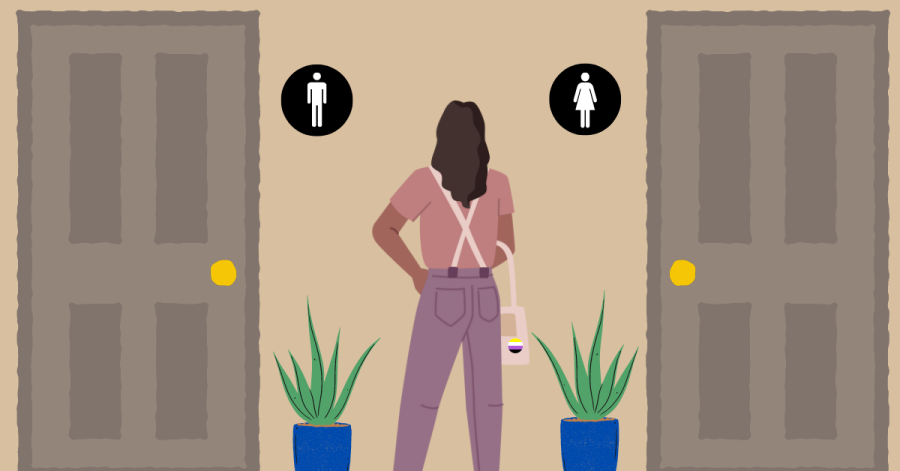The necessity of gender neutral restrooms
Going forward in the 21st century, gender neutral restrooms need to become more accessible.

More stories from Nic Cazin
There are numerous groups of people who are not able to use a gendered bathroom. There’s an easy solution: making gender-neutral bathrooms more available.
Warning for mentions of sexual and physical assault, and transphobia.
For most people, using a public restroom doesn’t require a second thought. They know which bathroom was made for them and is safe for them to use. However, not everyone has that luxury. There’s an easy solution: making all-access bathrooms readily available.
As a gender non-conforming person, I often find myself hesitating before walking into a public restroom. With the knowledge that there are other people in that bathroom, the fear of a harsh comment being made, or even a physical assault, is present in my mind. Research shows that I’m not alone, with one study finding that over 45 percent of transgender students in the United States avoid using the restroom when at school in fear of harassment.
Beyond the risk of verbal harassment is the threat of physical and sexual assault. As of 2019, 36 percent of transgender or nonbinary students have experienced some form of sexual assault in bathrooms and locker rooms. There’s even an instance of a trans teacher in Maryland suing Prince George County after being harassed by students, parents and coworkers at three different schools.
However, this issue isn’t limited to just schools. There are cases of transphobia in workplaces and at public pools, people being misgendered, harassed and in some instances forced to show identification to prove they are of the gender they identify as.
If all-access, or gender-neutral, bathrooms were easier to come by, transgender people would not face as many assaults.
In the past years, there have been multiple bathroom bills passed throughout the United States. Back in 2016, 16 states considered passing a bill that stated trans people could not use the bathroom that corresponded with their gender identity. The bill failed in all the states, except for North Carolina.
One year later, House Bill 142 was enacted to repeal the original, but many people felt that it did not help. House Bill 142 didn’t entirely get rid of the original bill, but it did stop local governments from passing anti-discrimination laws for the next three and a half years.
Additionally, the Equality Act has been passed in the House of Representatives. If the bill passes the Senate, then one of the many benefits will be the prohibition of discrimination against LGBTQ people for all public accommodations, which includes bathrooms.
While having gender-neutral bathrooms available is a better option for the trans community, it’s also highly beneficial to cisgender people, or people who identify as the gender they were assigned at birth. Families or anyone caring for a young child are great examples of this.
Parents may be uncomfortable with bringing their child of the opposite sex into their restroom. Likewise, when that child is a little bit older and is able to enter a restroom by themself, parents fear something might happen to their kid when they’re not with them. If there was an all-access bathroom available, families could safely use the restroom together.
Consider also parents of children with disabilities, or for that matter, anyone of any age with disabilities. Those people may need assistance doing everyday activities, which includes using the restroom.
A study back in 2020 showed that 61 percent of caregivers in the United States are women, while 39 percent are men. This means that male-identifying disabled people are more likely to have a female-identifying caregiver, if assistance is necessary. So one of those people will inevitably be put in an uncomfortable situation and have to use the opposite restroom.
Additionally, I understand why some cisgender people would feel uncomfortable using a gender-neutral bathroom. I’m not saying that all public restrooms should be gender-neutral, but I do strongly suggest that any new buildings should have an all-access restroom available for use. For any already existing buildings, there should be efforts to include these restrooms, whether that be through renovations or changing an existing gendered bathroom.
Having these bathrooms available will be highly beneficial to those who are transitioning, have transitioned or are uncomfortable with using a restroom with other people. Personally, I feel so much safer and, quite frankly, accepted each time a facility has a gender-neutral restroom, and I know other people feel the same.








Kendall Wilson • Nov 7, 2022 at 11:53 am
amazing article, nic
yusha • Nov 1, 2022 at 1:23 pm
very well written !!!